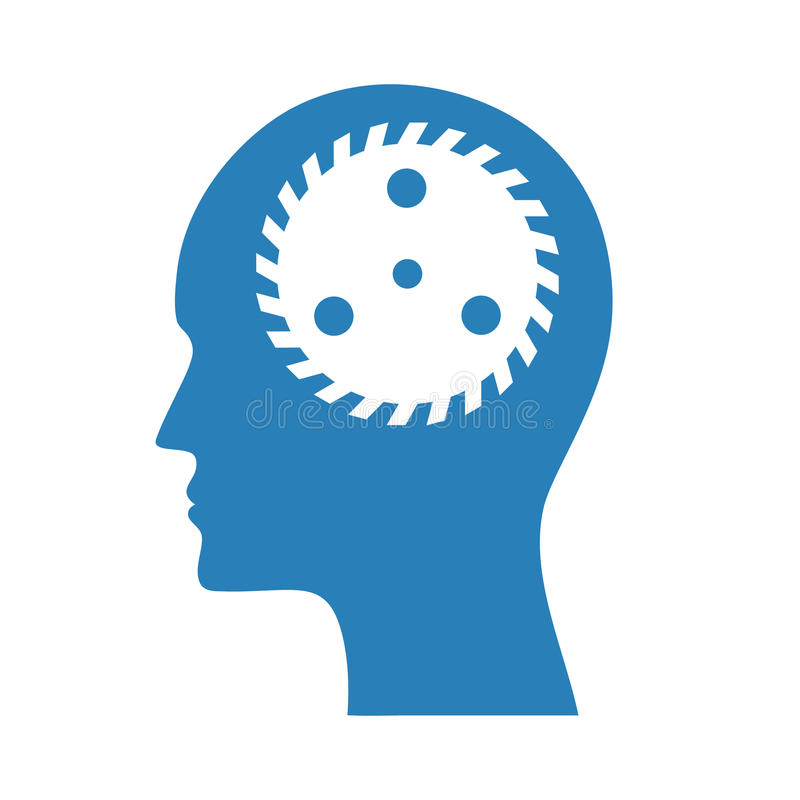Relationship Between Psychology And Science is being defined in this article. Psychologists use scientific principles, methods, and procedures to develop an organized body of knowledge and to predict how people will behave. Psychology is considered a social and behavioral science because it deals with both human behavior and mental processes. Mental processes include thought and ideas as well as more complex reasoning processes. Psychologists make inferences about mental processes by observing overt actions, directly observable and measurable movements or the results of such movements.

Overt actions include a range of behaviors: walking and gesturing, social interactions such as talking to someone, and emotional responses such as laughing. These behaviors are called overt because they are directly observable. Certain physiological reactions, such as heart rate and patterns of brain activity, must be measured with instruments, but the instruments make these responses observable.
Psychologists place so much emphasis on behavior that they have declared the years 2000-2010 the “Decade of Behavior.” Through their national organization, the American Psychological Association (APA), psychologists launched an initiative to focus attention on the contributions of the behavioral and social sciences in addressing many of society’s daunting challenges—including child abuse and neglect, violence against women, safety and security in our communities, and the critical issue of health care. Closely related to these goals arc educating people to learn and think critically, training workers to be more efficient and productive, and sensitizing people to the scope of diversity. Achieving these goals will require the application of an extensive knowledge base, which psychologists have built through scientific research. Psychologists often think of themselves as detectives, sifting through data and theories in an orderly was to uncover the causes of behavior.
Like other modern sciences, psychology is based on two premises—empiricism and theory development. According to the principle of empiricism, knowledge must be acquired through careful observation rather than from logic or intuition. Collecting useful empirical data requires researchers to set aside their personal biases and strive to l>e objective. After gathering and studying such data, psychologists are able to formulate theories. A psychological theory is a collection of interrelated ideas and observations that together describe, explain, and predict behavior and mental processes. Empirical observation leads to theories; thus, empirical data and theories are the basics of psychology.
Psychology is committed to empiricism—the view that knowledge is acquired through observation. Careful observation requires trying to be objective, gathering information systematically, and maintaining a healthy skepticism when studying behavior and mental processes. By following these basic principles, psychologists become scientific researchers. These principles can also help you be a critical thinker in your daily life.
Relationship Between Psychology And Sceince,With Scientific Method In Psychology
OBJECTIVITY.
For psychologists, objectivity means evaluating research and theory on their merits, without preconceived ideas and without allowing personal bias to enter the process.
By becoming aware of and putting aside personal bias, researchers are better able to make objective observations and fair evaluations. This requirement is very difficult because, like everyone else, scientists are people with feelings and convictions, who live in a particular social context. Psychologists must set aside personal views about people and society when entering the laboratory, which is not easy. But when researchers bring their biases into their research, they fail to be good scientists.
Unfortunately, the history of psychology (and other sciences) is filled with instances of bias. For example, during the 19th century, the intelligence of people of African descent was assumed to be lower than that of European peoples. This prejudiced view led to scientific research that supported this opinion. A neurologist named Morton found that people of African descent had smaller brains and were thus less intelligent than those of European descent (Gould,
1996). That view was wrong; brain size does not vary with ethnic background. Morton saw what he expected to see rather than what his data showed. His research was contaminated because he failed to be objective.
As they develop theories that describe, explain, predict, and manage behavior, psychologists use the same method as other scientists. 1 he scientific method is the technique used in psychology to discover knowledge about human behavior and mental processes; it involves stating the problem, developing a hypothesis, designing a study, collecting and analyzing data, and drawing conclusions and reporting results.
Ur’s consider these five basic steps of the scientific method as an overview of how psychologists (and other scientists) do their work.
STATE OF THE PROBIEM.
Psychologists must first ask questions that can be answered, that is, questions that are stated in a way that allows investigation. Psychologists refine some of the techniques used by other scientists in order to deal with the subtleties of human behavior. The typical scientific research process in ps\ chology is systematic and begins with a specific, narrow \ defined question.
For Instance, if you ask an overly broad question such as “What is the mind?” you will make little headway toward an answer. But questions such as “Docs the type of reward affect children’s willingness to practice a musical instrument?” or “Does St.John’s wort work as well as Prozac in treating depression?” can be investigated.
HYPOTHESIS.
In the second step of the scientific method, psychologists make an educated guess about the answer to the question they’ve posed. Such a formulation is called a hypothesis—a tentative statement or idea expressing a relationship concerning events or variables included in a research study. A hypothesis might put forth that rewards will prompt children to practice a musical instrument.
Most often, a hypothesis emerges from a theory, which psychologists have developed based on their current knowledge and past research. As previously defined, a theory’ is a collection of interrelated ideas and information that describes, explains, and predicts behavior and mental processes. For example, theories of reinforcement address the power of different types of reinforcement, including positive reinforcement (reward). A theory must organize data well, and it must suggest testable predictions (hypotheses) that can be used to check the theory. Such testing usually occurs within the context of a well-designed research study.
COLLECT AND ANALYZE DATA.
After researchers have specified rhe key variables, chosen the participants, and considered ways of controlling for extraneous variance, they conduct the study, hoping it will yield interpretable, meaningful results. Techniques for data collection must be carefully chosen so as not to bias the results in favor of one hypothesis or another. The data collected must also be organized, coded, and simplified in a way that allows a reasonable set of conclusions to be drawn. When a researcher has gathered 10,000 observations on 300 participants, something must be done to organize all the information. Psychologists usually use statistical methods to help summarize and condense the data.
Researchers want to be sure that the differences they find are meaningful, and they use statistics to allow them to conclude whether rhe results they have obtained are significant. For psychologists, a significant difference is a difference that is statistically unlikely to have occurred because of chance alone and is inferred to be most likely due to the systematic manipulation of variables by the researcher. For example, if the data collected from the study on reward and musical practice increased the time that children spent practicing, the researchers would want to conclude that these differences occurred because of the rewards and that the difference is big enough to be important. The results are significantly different only if they could not be due to chance, to the use of only one or two participants, or to individual differences among participants. If experimental results are not statistically significant, they do not confirm the hypothesis and arc nor as informative as results that do offer confirmation. (As Chapter 5 discusses, rewards are very powerful in changing behavior, and a reward program can have a large effect on willingness to practice.)
DRAW CONCLUSIONS A\D REPORT RESULTS.
After the results are organized and the statistics have been calculated, researchers then organize their ideas and observations in order to make predictions about behavior. They begin to draw conclusions about results and relate those conclusions to the data that they have collected. Ultimately, researchers report their results to the scientific community by publishing their study—they report their findings along with their interpretations of what the results mean.
The relationship between psychology and science can be effectively explained in a tabular format, highlighting key aspects such as definitions, methodologies, objectives, and areas of overlap. Here’s a guide to structure this comparison:
| Aspect | Psychology | Science |
|---|---|---|
| Definition | The study of human behavior and mental processes. | A systematic enterprise that builds and organizes knowledge in the form of testable explanations and predictions about the universe. |
| Methodologies | Uses methods like observation, surveys, case studies, and experiments to study and interpret human behavior and mental processes. | Employs empirical methods, including observation, experimentation, and hypothesis testing to understand natural phenomena. |
| Objectives | Seeks to understand, predict, and sometimes change behavior and mental processes of individuals. | Aims to uncover facts and laws about the world around us, from the smallest particles to vast galaxies. |
| Areas of Overlap | Both rely on empirical evidence and the scientific method for understanding phenomena. Psychological studies often contribute to scientific knowledge about human biology, brain functions, and behavior. | Science, especially fields like biology, neurology, and sociology, often informs and is informed by psychological research, providing a more comprehensive understanding of human nature. |
| Approach to Knowledge | Focuses on subjective experiences, cognitive processes, and behavior as central units of analysis. | Generally takes an objective approach, focusing on observable and measurable phenomena. |
| Application | Applied in therapy, counseling, education, and understanding societal issues. | Applied in various fields like technology, medicine, engineering, and environmental studies. |
This table provides a basic framework for understanding the relationship between psychology and science. Each field complements the other, contributing to a broader and deeper understanding of human life and the universe.
Conclusion
The relationship between psychology and science is symbiotic, with each influencing and benefiting from the other. Through scientific inquiry, psychology gains credibility, validity, and a systematic approach to understanding human behavior. Simultaneously, psychology contributes to the wider scientific community by shedding light on mental processes, forming the basis for interventions, and exploring the complexities of the human mind. The integration of psychology and science continues to provide valuable insights into the intricacies of human nature.
